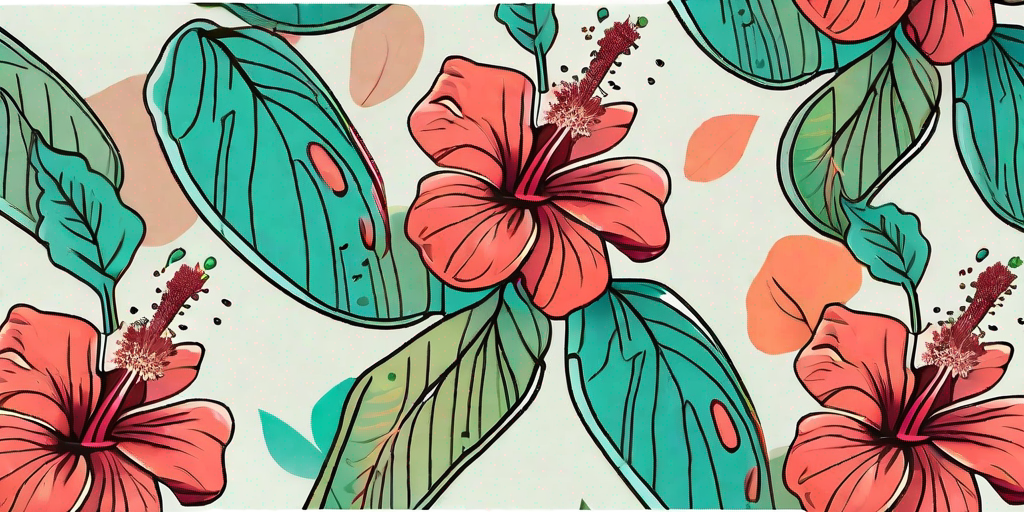
Ah, the Hibiscus. A flower that's as fun to say as it is to grow. With its vibrant colors and tropical vibes, it's no wonder you're interested in cultivating your own. But where to start? Fear not, green-thumbed friend, for we have all the information you need to transform your garden into a Hibiscus haven.
Understanding the Hibiscus
Before we dive into the nitty-gritty of Hibiscus horticulture, it's important to understand what you're dealing with. The Hibiscus is a genus of flowering plants in the mallow family, boasting hundreds of species. They're native to warm climates, so they're perfect for those of you who like to pretend you're on a tropical island while sipping your morning coffee.
These plants are known for their large, trumpet-shaped flowers with five or more petals. The colors can range from white to pink, red, orange, peach, yellow or purple. It's like a rainbow in plant form. How can you resist?
The Types of Hibiscus
There are many types of Hibiscus plants, but the most commonly grown species are Hibiscus syriacus (the hardy hibiscus or rose of Sharon), and Hibiscus rosa-sinensis (the tropical hibiscus). The former is perfect for those in colder climates, while the latter will thrive in your indoor jungle or a warmer outdoor garden.
There's also the Hibiscus sabdariffa, or roselle, which is grown for its fiber and edible products. Yes, you can eat parts of this plant. Hibiscus tea, anyone?
Planting Your Hibiscus
Now that you're familiar with the Hibiscus, let's get down to business. Planting your Hibiscus is a process that requires patience, care, and a little bit of cheekiness. After all, you're about to trick a seed into becoming a stunning plant. It's like magic, but with more dirt.
Here's a step-by-step guide to planting your Hibiscus from seed:
- Soak your seeds: Hibiscus seeds have a hard shell, so they need a good soak to soften up. Place your seeds in a bowl of water and leave them overnight. If they're still floating in the morning, give them a little poke until they sink.
- Prepare your pots: Fill a small pot with seed compost and water it well. Make sure the compost is moist, but not waterlogged.
- Sow your seeds: Place a seed on the surface of the compost in each pot. Don't bury them - they need light to germinate.
- Cover and wait: Cover the pot with a clear plastic bag and place it in a warm, bright place. Patience is key here. Germination can take anywhere from a few days to a few weeks.
- Transplant your seedlings: Once your seedlings have two sets of true leaves, you can transplant them into larger pots or directly into the ground if the weather is warm enough.
Caring for Your Hibiscus
Once your Hibiscus is planted, the real fun begins. Caring for your Hibiscus is a labor of love, but the payoff is worth it. Here are some tips to keep your Hibiscus happy and healthy:
- Watering: Hibiscus plants love water, but they don't like to sit in it. Make sure your plant is well-watered, but also well-drained.
- Light: These plants love the sun. Make sure they get at least six hours of sunlight a day.
- Temperature: Hibiscus plants prefer a temperature between 60-90°F. Anything below 50°F, and your plant might start to protest.
- Fertilizer: Feed your Hibiscus with a high potassium fertilizer every two weeks during the growing season.
FAQs
Why isn't my Hibiscus flowering?
There could be several reasons for this. It could be due to a lack of sunlight, incorrect watering, or not enough nutrients. Make sure your Hibiscus is getting at least six hours of sunlight a day, is well-watered but not waterlogged, and is being fed a high potassium fertilizer.
Can I grow Hibiscus indoors?
Absolutely! In fact, the tropical Hibiscus rosa-sinensis is perfect for indoor growing. Just make sure it gets plenty of sunlight and warmth.
Can I eat my Hibiscus?
Yes, but only certain parts of certain species. The Hibiscus sabdariffa is commonly used for its edible products. Always do your research before chowing down on your plants!
And there you have it, folks! Your comprehensive guide to growing Hibiscus. With a little patience, a little care, and a lot of love, you'll have a garden full of vibrant, tropical flowers in no time. Happy planting!















